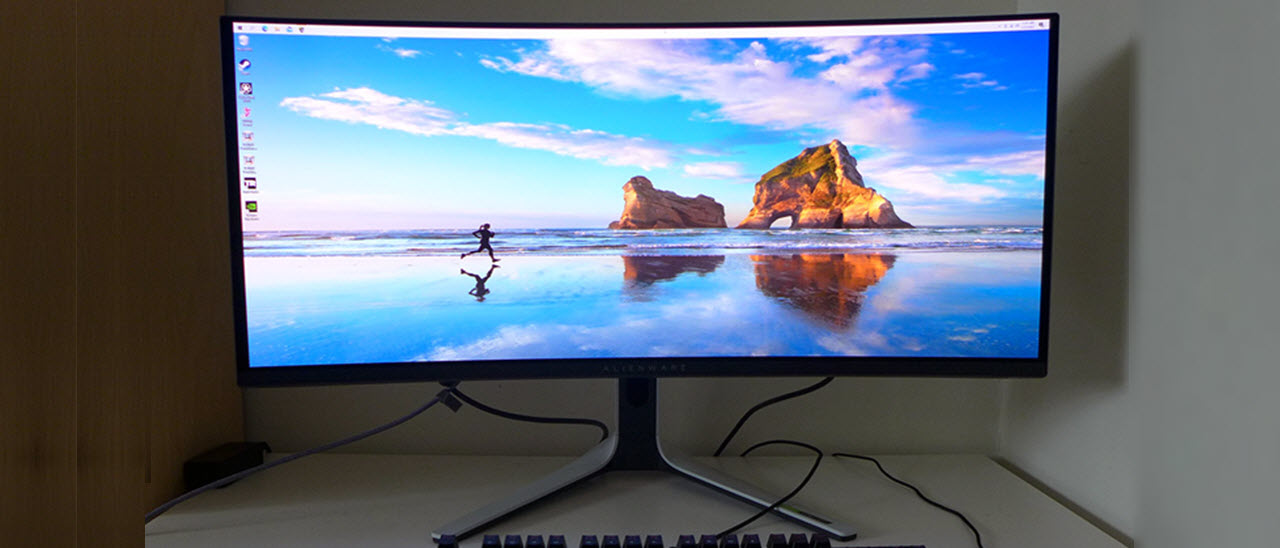Why you can trust Tom's Hardware
Our HDR benchmarking uses Portrait Displays’ Calman software. To learn about our HDR testing, see our breakdown of how we test PC monitors.
When it comes to HDR, OLED is king. LCD screens can barely mop the floors in the throne room by comparison. The AW3423DW doesn’t need dynamic contrast or other trickery to achieve phenomenal images. With the ability to address each pixel’s luminance, the picture has tremendous depth and dimension.
HDR Brightness and Contrast
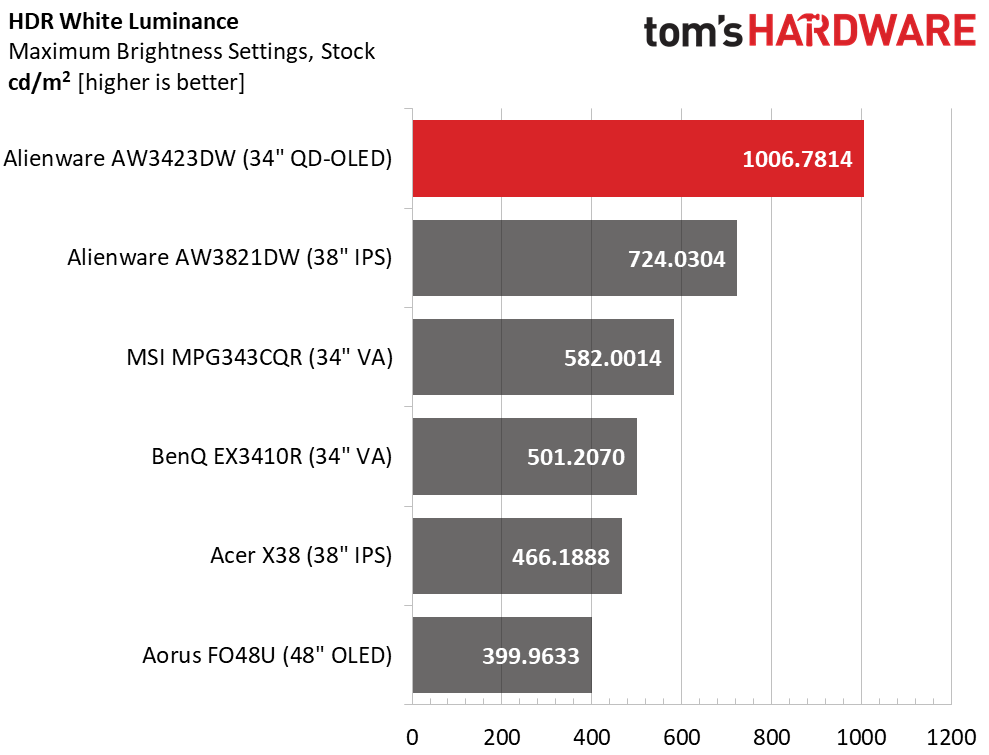
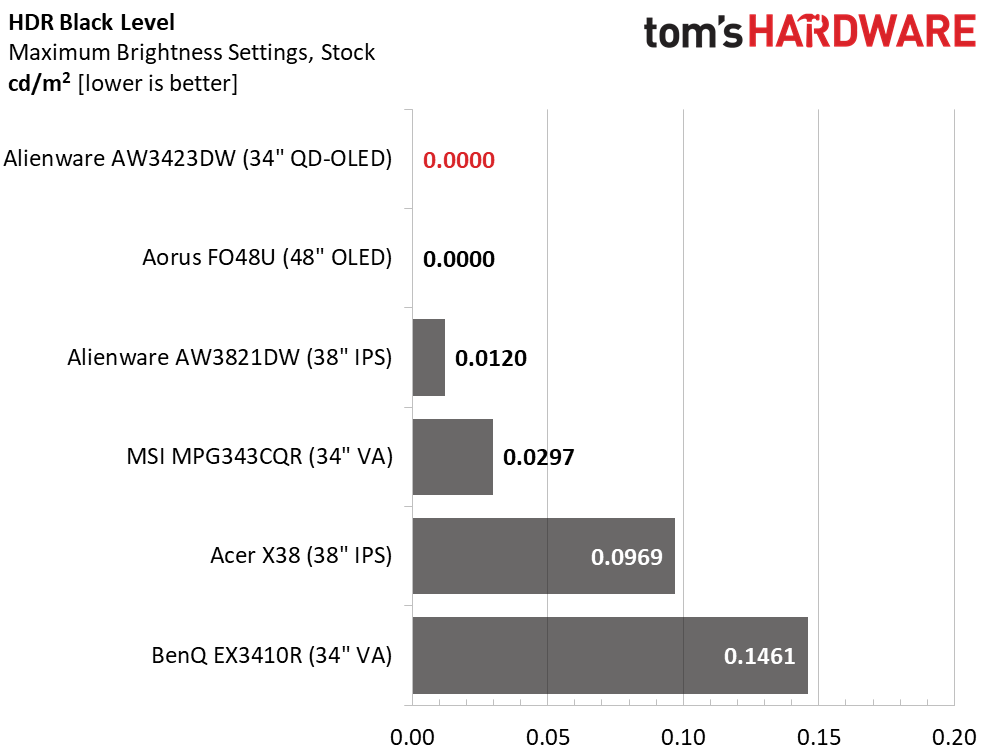
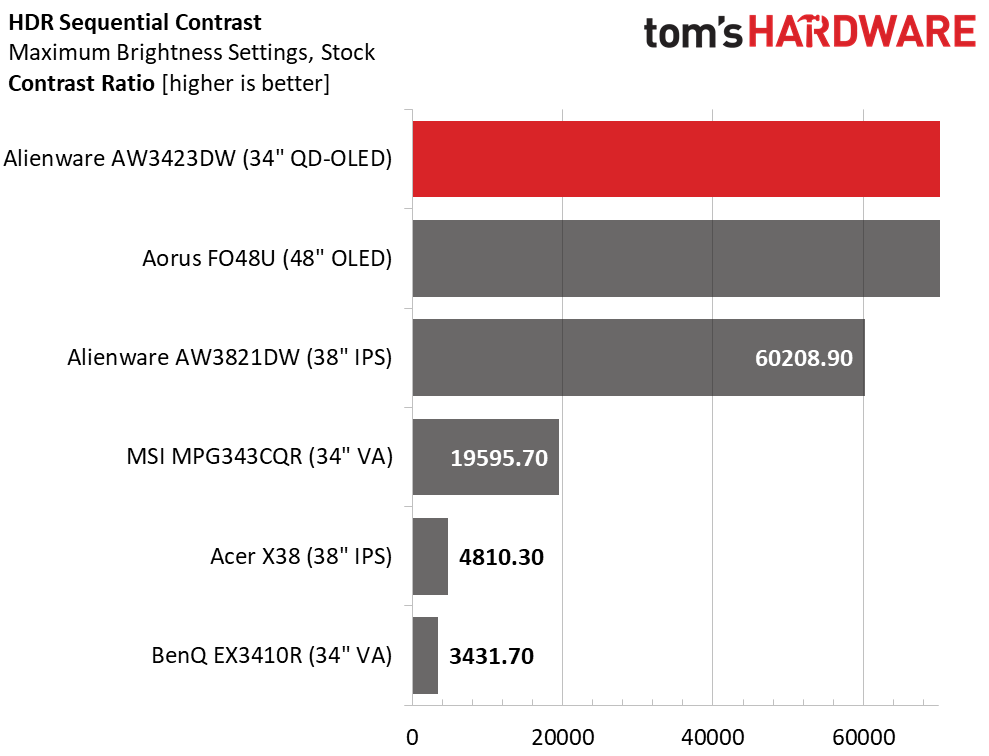
To hit the claimed 1,000 nits, I had to measure a 1% window pattern. That’s just a tiny box in the center of the screen. The AW3423DW uses brightness modulation to avoid overdriving the panel which ultimately shortens its lifespan. A 25% window measured 557 nits peak and a full white field measured 459 nits. What this means is that specular highlights like stars in space or reflections from metal will be very bright while larger white areas like an ice rink or clouds will be bright but not harsh. You won’t see any change in brightness when viewing actual content, which is the important thing. As in SDR mode, black levels cannot be measured, so HDR contrast is also theoretically infinite.
Grayscale, EOTF and Color
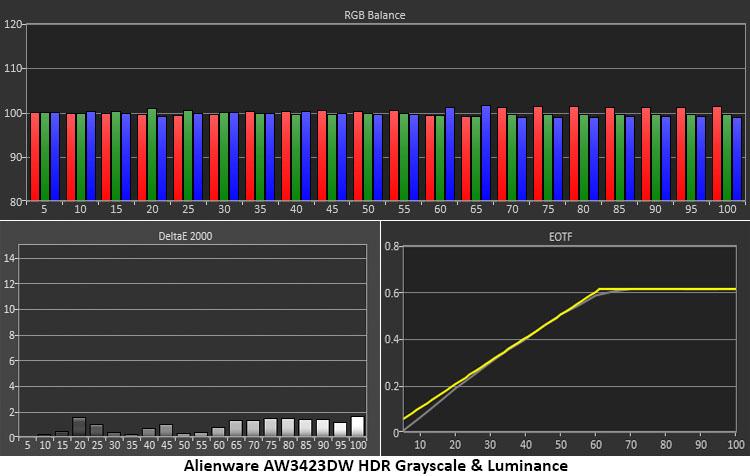
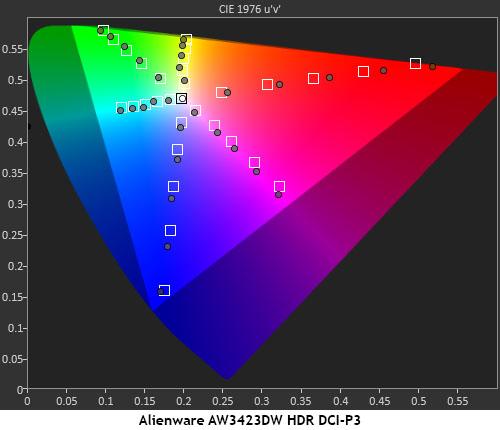
The AW3423DW’s HDR grayscale tracking is visually flawless. I could not see any errors at any point. The EOTF also tracks to near perfection. The darkest steps are a bit too dark but not enough to obscure detail. This is the luminance tracking I wish I could see in SDR mode. But it makes HDR content look that much better in comparison.
The HDR gamut test delivers similarly accurate results with just slight over-saturation in all colors. Hue values are pretty much spot-on, and all points track linearly. This means HDR content will have the same natural and smooth look as SDR, just with greater contrast and more saturated color. Of all the HDR monitors I’ve tested, the AW3423DW is one of the very best.
Get Tom's Hardware's best news and in-depth reviews, straight to your inbox.

Christian Eberle is a Contributing Editor for Tom's Hardware US. He's a veteran reviewer of A/V equipment, specializing in monitors. Christian began his obsession with tech when he built his first PC in 1991, a 286 running DOS 3.0 at a blazing 12MHz. In 2006, he undertook training from the Imaging Science Foundation in video calibration and testing and thus started a passion for precise imaging that persists to this day. He is also a professional musician with a degree from the New England Conservatory as a classical bassoonist which he used to good effect as a performer with the West Point Army Band from 1987 to 2013. He enjoys watching movies and listening to high-end audio in his custom-built home theater and can be seen riding trails near his home on a race-ready ICE VTX recumbent trike. Christian enjoys the endless summer in Florida where he lives with his wife and Chihuahua and plays with orchestras around the state.
-
Historical Fidelity Why only 250 nits in SDR mode? Is there a way to get the ~450 nits of the full window HDR mode but restricting the monitor to 256 brightness steps? Playing game at 250 nit peak brightness is too dull even in dark environmentsReply -
warezme Having and OLED for my home theater I was impressed with the overall ratings of this monitor for my office/game computer. I have already ordered one from Dell. I'm excited about the color accuracy and speed.Reply -
Hellbound It would have been nice if you mentioned the non-standard triangle RGB subpixel layout (green on top, red and blue on bottom)..Reply
Because OS's and rendering tools are not built around this layout, you will get text and window border fringing. -
SkyBill40 This looks to be an outstanding display and I, like others, would love to have one. The price is much lower than initially expected and while that's great, it's also caused an issue with regard to availability. Checking the Dell site before posting this, the delivery is currently June 15th and that's with it being expedited (and at additional cost). That pretty much sucks for someone looking to spend money and get it soon, but I guess this is the way it goes for wanting to be on the bleeding edge... along with everyone else.Reply
Looks like I'll have to "suffer" on with my HP OMEN 27 for the time being. It's TN and not as pretty, but it was priced nice when I got it and does the job with full G-Sync. -
hotaru.hino Reply
This at least springs hope that if you order now, you'll get one eventually. Or Dell doesn't want to an indefinite "sold out" button.SkyBill40 said:Checking the Dell site before posting this, the delivery is currently June 15th and that's with it being expedited (and at additional cost). That pretty much sucks for someone looking to spend money and get it soon, but I guess this is the way it goes for wanting to be on the bleeding edge... along with everyone else.
Either way, they won't charge you until the order actually ships, so there's that. -
SkyBill40 Replyhotaru.hino said:This at least springs hope that if you order now, you'll get one eventually. Or Dell doesn't want to an indefinite "sold out" button.
Either way, they won't charge you until the order actually ships, so there's that.
I suppose... but life has priorities and this one is at the back of the line at this point. :confused_old: -
catraveler Reply
This sounds supper ! I have an LG C1 OLED, it is the best I have ever seen. What controller is required for the AW3423DW ?Admin said:Alienware brings OLED to the desktop with its AW3423DW 34-inch Curved Ultra-Wide gaming monitor. It features 175 Hz, G-Sync Ultimate, HDR, extended color and infinite contrast. And it takes imaging to a completely different level.
Alienware AW3423DW Gaming Monitor Review: QD-OLED Impresses : Read more -
jacob249358 gotta make sure I get the extended warranty and financing. Wait are you interested in the extended warranty and financing? ltt enjoyers :)Reply
